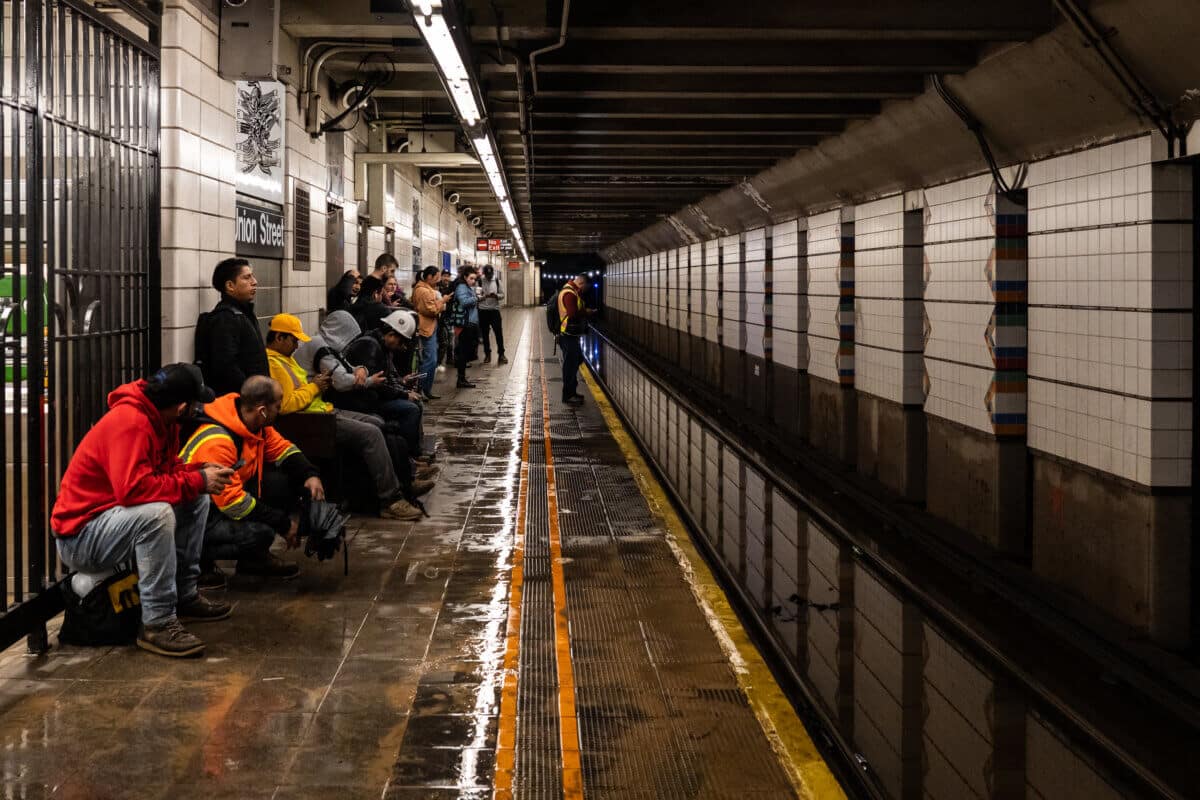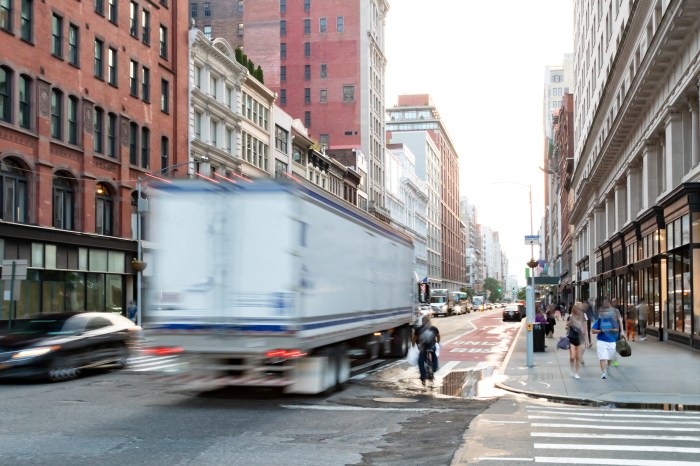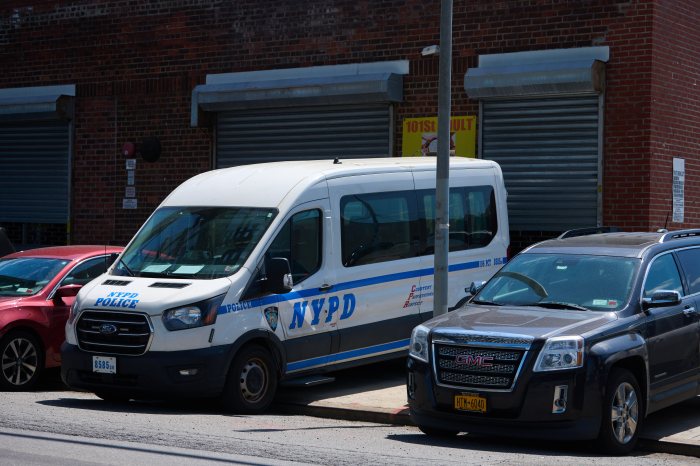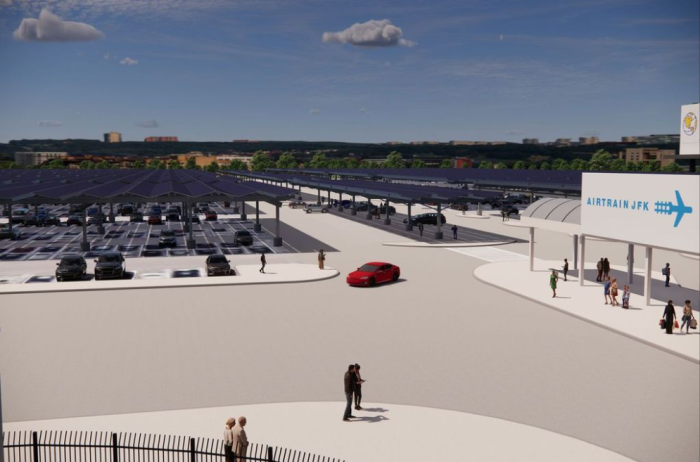The MTA estimates it needs about $6 billion over the next decade to address the impacts of climate change on the transit system, according to its new agency climate plan released on Thursday.
The “Climate Resiliency Roadmap” outlines the challenges that North America’s largest mass transit system faces from the planet’s most existential concern: the changing climate. Much of the MTA’s system of subways and commuter railroads is over a century old and is already starting to be strained by climate change, including more torrential flooding and extremely hot days. Those challenges are expected to compound significantly in the coming decades.
“We all remember Superstorm Sandy more than a decade ago,” said Jamie Torres-Springer, the MTA’s construction & development chief, at a news conference in the Bronx’s Mott Haven train yard on Thursday. “But just in the past couple of years, historic rainstorms like Ida and Ophelia created major disruptions to our system. Rising sea levels and increasing heat pose equally dangerous threats to our infrastructure.”
“If we don’t take the proper precautions, we’ll end up with more disruptions from extreme weather events and deteriorating service levels even on sunny days, due to the deterioration of our infrastructure,” Torres-Springer continued. “A lot of our $1.5 trillion system is at risk now and in the future.”
Sea levels have already risen by a foot since the subway opened in 1904, but are expected to rise an additional 30 inches by the 2050s. The number of torrential downpour events is expected to double by 2050, while forecasters anticipate up to 70 “extreme heat” days per year in 2050, up from 18 now.
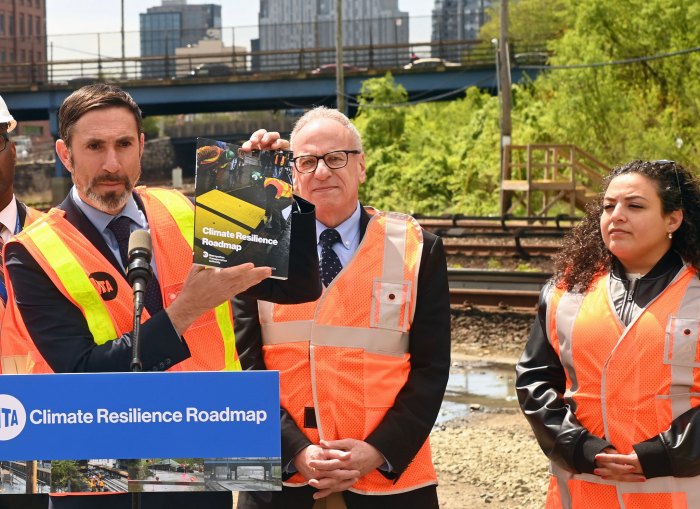
All of that means some of the most galling images of natural disasters in New York, flooded subway stations, are going to become more and more common, and of greater intensity unless officials act sooner rather than later. Generational tempests like Superstorm Sandy cause impacts that are still felt many years later, but even smaller storms without names can impact the lives of millions of people in the region.
Many of the upgrades that could make a huge difference in a serious rainstorm are relatively simple and cheap, but add up given the vastness of the city’s transit network. Those include raising the top step of street entrances to the subway or of vent coverings to prevent water seeping into the system. Others, like ensuring catch basins are clear before storms, require collaboration between the MTA, a state authority that is de facto run by the governor, and the city government.
Larger investments include improving drainage systems in subway tunnels and at yards, and ensuring vital equipment isn’t vulnerable to either flooding or extreme heat.
Investments are also needed on the commuter railroads, with perhaps the most endangered being Metro-North’s Hudson Line, which is almost entirely adjacent to the Hudson River. Extreme weather brought extended service disruptions twice last year on the line — once after “thousand-year” flooding, and the other time after a mudslide.
Without resiliency upgrades like elevating tracks and fortifying embankments, the line could be underwater at high tide even on a sunny day by the 2050s, the MTA says.
The MTA is expected to request the money as part of its upcoming five-year capital plan, which must be approved by the agency’s board, the state legislature, and the governor.
“We need a transit system that’s not underwater,” said MTA Chair Janno Lieber. “We need the money.”



